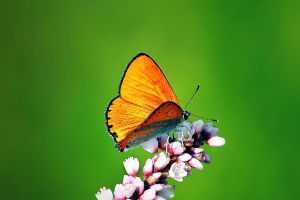Betta splendens, also known as fighting fish or Siamese fighting fish, are very popular pets, characterized by relatively fierce, good interaction with people, relatively low maintenance costs, etc.
The Thai betta can live for up to four years. Read on to find out how to help your betta lead a happy and healthy life.
Pick your betta. When buying a Thai betta, the main things to consider are:
Color. Is the body color of the betta fish bright and bright, or pale and dark? Bettas come in many colors, but blue and red (usually dark) are the most common.
Sensory acuity. Do betta fish react to your movements? Does it swim fast when it sees you? Still no response at all, sulking at the bottom of the tank? Don't pat the surface of the tank all the time, as this will make the fish very agitated, but move your finger back and forth in front of the betta.
Don't be afraid to buy a more docile betta, it may have seen a lot of people today and was tired when you came. Many of the common fighting fish bought in pet stores have been specially domesticated, which can save you many troubles in keeping pets.
General health. Are the betta's fins in good condition, or have some torn fins or other injuries? How is the eye condition of the betta fish? Did you see any abnormal lumps (parasites) on it? If you see a betta fish that is out of whack, consider other fish.
Before buying a betta, consider what you need to prepare ahead of time. With proper care, bettas can live up to 10 years, so do your homework before buying. The tank capacity of the betta fish should not be less than 10 liters, and should be equipped with heaters and filters.
Despite the recent popularity of keeping bettas in small vases or glass tanks, fish should not be kept in less than 4 liters of water; too little water will be detrimental to their growth, and the place is indeed too small! In this way, the betta will be very unhappy and may not even live for long.
Do some basic background checks. There is a lot you need to know about Thai betta, and far more than the basics listed earlier. In short, big pet stores generally do not provide very detailed information on fighting fish, unless you happen to meet an avid salesperson.
In addition to understanding the basic knowledge above, you can go to bettafish.com, bettatalk.com, ibcbettas.org and other websites to find detailed information on betta fish.
These sites are also useful after you buy a betta, where you can ask questions, find tips on betta nutrition and health, and find like-minded fish keeping friends who can share everything you need to know about keeping betta fish.
The tank should not be too small. And it is necessary to lay bottom sand or ceramsite, which is conducive to the emotional stability of these small ornamental fish.
Obstacles and aquatic plants must be present. Another is that in the fish tank where the betta fish is mixed, there must be many obstacles.
For example, some aquatic plants should be properly cultivated, neither too much nor too little, and the sinking wood and rhododendron roots can be placed accordingly. The intention is very simple. , so that they have a free space to hide as well.
In the end, it is about feeding and water temperature. Although bettas can withstand low temperatures, when the water temperature is below 22 degrees, they are not in any condition, and they are very likely to get sick.
Therefore, the water temperature of the entire fish tank is It is necessary to be constant over at least 22 degrees.


